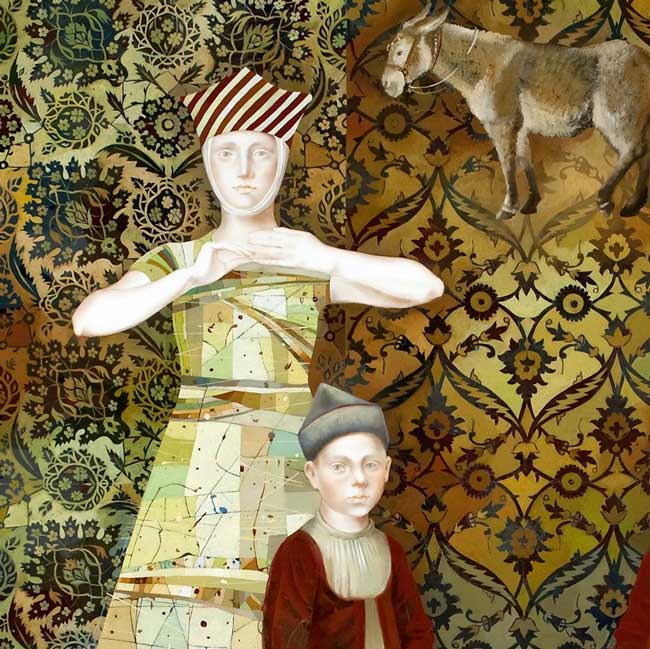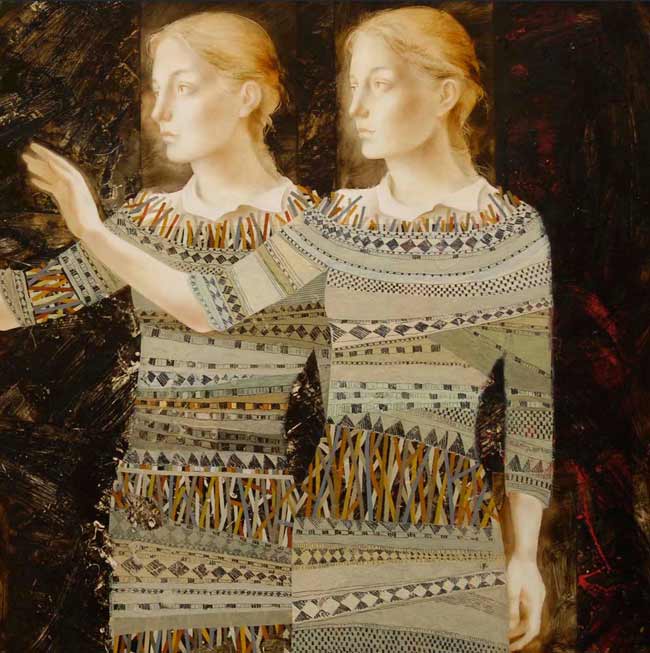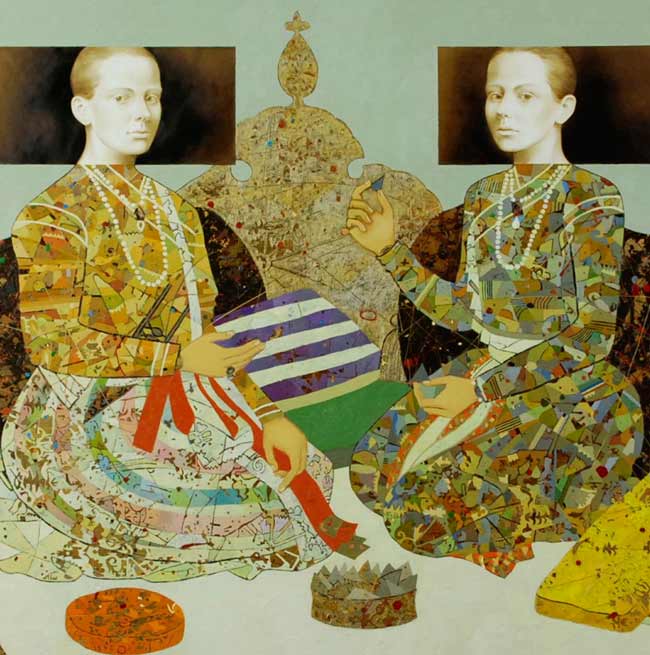Igor & Marina, new take on Old Masters

We are artists, which is an excellent thing. We are married, also an excellent thing. We work together-not necessarily an excellent thing. What do we mean by this? Clearly, it isn’t that we don’t find inspiration in each other’s work or ideas. However, on a practical level, it is hard to avoid some problems. First of all, though we have been together for twenty years, whenever we work on a picture together,we spend most of our time arguing. Perhaps this isn’t all that surprising. Van Gogh and Gauguin tried to work together in Arles. They stood side-by-side, produced some wonderful work, and ultimately came to hate each other. Our task may even be harder. They weren’t married after all, and we don’t want to end of hating each other. Still, as we say, working together generally produces conflict rather than peace.

Why? Primarily, it is because we come to a canvas from different directions. Igor’s specialty is a subtle sense for color, a wonderful appreciation for the tactile nature of paint, canvas, and wood, and an intuitive feel for how to play with abstract images. Marina, on the other hand, possesses an excellent and subtle touch for realistic drawing and is capable of creating new images on the basis of the works of older artists, particularly those of the Italian and Dutch renaissance. We have been working towards our present level of cooperation for many years, first employing the techniques of realist art, then becoming interested in the achievements of abstraction, then those of the Russian avant-garde.

We were able to do this because in the Russian academic system within which we were educated, artists are rigorously taught the skills of the Old Masters. However, we are taught to use those skills to create paintings with a deep humanity about them, we are told to strive for beauty, but beauty with depth in order to create works that will stay with you for a long time.
Thus, we studied the techniques and conceptions of Russian religious art, inspired by the work of Andrei Rublev and Dionysius alongside those of the West European renaissance. We were made aware of the great contributions of East European artists to modern visual art, including such deeply spiritual figures as Chagall, Kandinsky, and Malevich alongside our education in the techniques of Picasso and Matisse. Moreover, in our work we tried to synthesize these traditions.
In this synthesis of Western post-renaissance art with the Russian tradition, the religious tradition in particular, that has, we think, given our work a new and unusual profile. We attempt to combine what might seem to be the uncombinable – the bold colors of contemporary artistic practice with the achievements of the Renaissance, to which we add some surrealist notes to give a new meaning to familiar images, placing them in unexpected frames, forcing the viewer to enter our invented world and to experience a new world of his or her own.

Perhaps it might have been possible for one or the other of us to go through this entire creative path by ourselves. Perhaps it might have been possible for one or the other of us to create synthetic paintings of this sort alone. However, for the moment, we need to make use of the separate talents and separate but related interests of each other. And each time we see the result of our collective work; we decide that the whole process, with all its aches and pains is worth it.
Igor & Marina
July 10, 2016
Read about my studio visit to Igor & Marina
